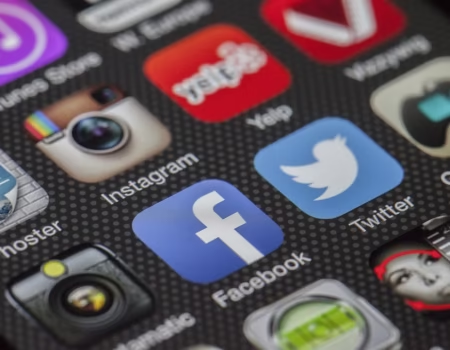Unlocking Bluetooth Technology: A Comprehensive Guide
Embracing the World of Connectivity
In the realm of wireless technology, Bluetooth has established itself as a ubiquitous force, shaping the way we interact with our digital ecosystems. As we delve deeper into this comprehensive guide, we aim to unravel the layers of Bluetooth technology, from its fundamentals to the latest advancements, ensuring you harness its full potential. Whether for personal use or enhancing your professional toolkit, understanding Bluetooth can significantly elevate your tech savvy in today’s connected world.
The Backbone of Bluetooth
Bluetooth technology, named whimsically after a 10th-century king, Harald Bluetooth, who united Denmark and Norway, similarly unites various devices, facilitating seamless wireless communication. Initially conceived as an alternative to the tangle of computer peripheral wires, Bluetooth has evolved far beyond its original scope. It operates on the 2.4 GHz ISM band, a globally available frequency spectrum, ensuring compatibility across a multitude of devices worldwide.
The Evolution of Bluetooth Standards
Starting with Bluetooth 1.0, which now seems archaic with its lower speeds and limited range, the technology has undergone significant transformations. The most recent iteration, Bluetooth 5.2, introduced in the Bluetooth SIG (Special Interest Group) announcement in December 2019, promises faster communication, increased range, and lower energy consumption. This leap forward enables more efficient device connections and paves the way for innovations such as LE Audio, which offers Broadcasting Audio and Multi-Stream Audio capabilities. For those keen on exploring devices that integrate these latest specifications, checking out manufacturers’ announcements and product listings on official websites like Bluetooth’s official site is recommended.
Unlocking the Potential with Advanced Bluetooth Features
Bluetooth technology today is not just about audio transmission or peripheral connectivity. The introduction of Low Energy (BLE) with version 4.0 marked a paradigm shift, particularly beneficial for IoT (Internet of Things) devices, where power consumption is a critical factor. BLE facilitates a vast ecosystem of smart devices, from wearables to home automation systems, functioning efficiently on minimal power. Additionally, the advent of Bluetooth Mesh has revolutionized connectivity, allowing devices to communicate in a network, extending the range and reliability of connections in large spaces or across multiple device nodes.
Security Measures in Bluetooth Technology
With connectivity comes the question of security. Bluetooth technology has continually adapted to enhance security protocols. The introduction of features like LE Secure Connections with Bluetooth 4.2 offers an advanced level of security, utilizing FIPS-compliant algorithms for encryption, ensuring safer data transmission. Users are advised to keep their devices’ firmware updated to the latest versions to mitigate any potential security risks. For individuals and organizations looking to deepen their understanding of Bluetooth security, resources like the Bluetooth SIG’s official security documentation offer valuable insights.
Maximizing Bluetooth in Daily Life and Beyond
Embracing Bluetooth technology in daily life can streamline operations and enhance experiences in ways previously unimagined. From creating wireless workspaces with Bluetooth keyboards, mice, and printer connections to achieving audio nirvana with wireless headphones and speakers, the possibilities are endless. Innovations such as Bluetooth trackers also offer practical solutions for keeping tabs on valuable items, revolutionizing personal asset management.
Professionally, integrating Bluetooth technology can significantly improve operations, especially in sectors like healthcare, where wireless devices can lead to better patient monitoring and outcomes. While there is a plethora of products available, selecting ones with good reviews and manufacturer support is crucial for a satisfactory experience. For example, reputable brands like Jabra and Logitech offer high-quality Bluetooth peripherals that consistently receive positive feedback for reliability and ease of use.
Looking Ahead: The Future of Bluetooth Technology
As we gaze into the horizon, the future of Bluetooth technology beams with potential. With the ongoing development in Bluetooth standards, like the anticipated advancements in speed and range, alongside the burgeoning IoT landscape, Bluetooth is set to play a pivotal role. Innovations in areas such as BLE Audio are poised to revolutionize the way we experience sound, bringing about more immersive audio experiences with lower power consumption.
The Inexorable March toward a Connected World
The trajectory of Bluetooth technology underscores a broader trend towards enhanced connectivity. As devices become increasingly interconnected, the role of Bluetooth as a facilitator of seamless, wireless communication will only grow. For tech enthusiasts and professionals alike, staying informed about these advancements is essential. Engaging with communities and forums, alongside following technical articles and updates from trusted sources, can keep you ahead of the curve.
Harnessing Bluetooth Technology: A Concluding Thought
In the comprehensive exploration of Bluetooth technology, from its humble beginnings to its current position as a cornerstone of wireless communication, one thing is clear — its potential is only bound by the limits of innovation. As consumers, professionals, or simply tech aficionados, our engagement with Bluetooth technology is not just about leveraging it today but shaping its tomorrow. By embracing the advancements, understanding the intricacies, and advocating for secure, efficient use, we not only unlock the technology’s capabilities but also pave the way for a future where connectivity is fluid, secure, and ubiquitous.
In closing, Bluetooth technology, with its rich history and promising future, stands as a testament to human ingenuity. As it continues to evolve, the onus is on us to adapt, innovate, and ensure that as we become more connected, we do so responsibly, securely, and with an eye toward the future.
Discover more from Akiatech Solutions Blog
Subscribe to get the latest posts sent to your email.








